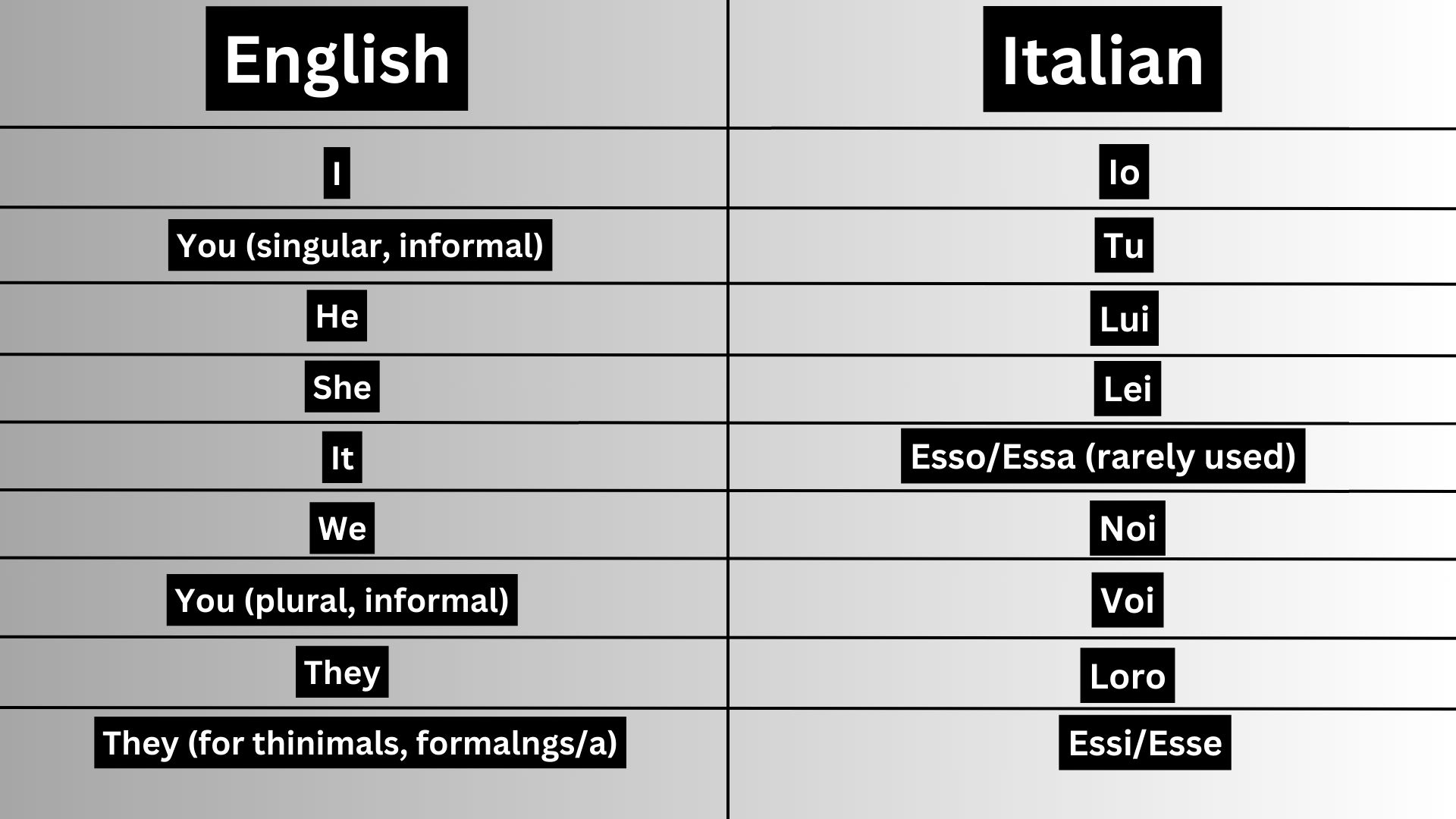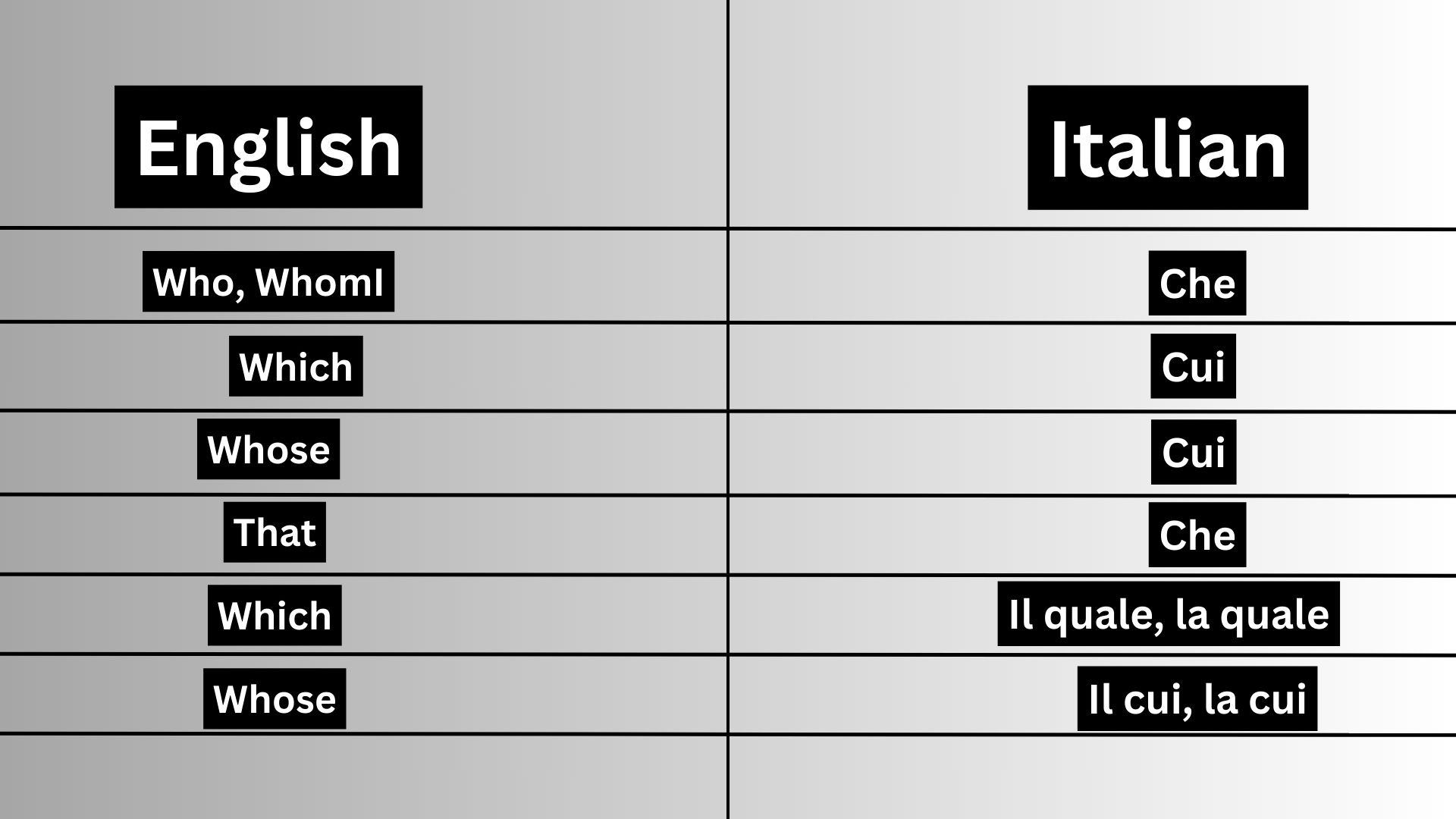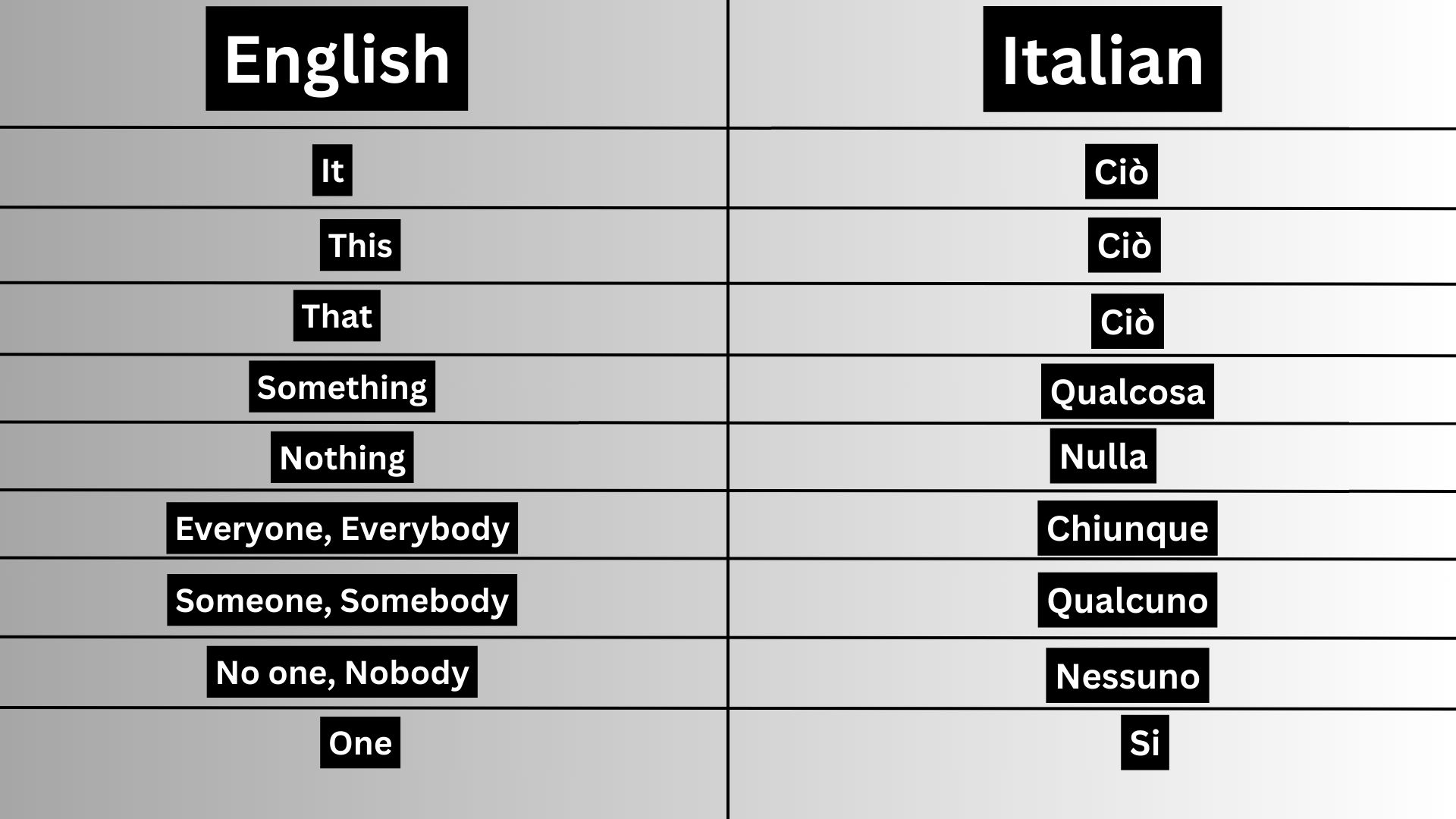Mastering Italian pronouns is crucial, yet often overlooked, for anyone aiming to speak Italian fluently. This guide deeply explores different types of pronouns, each vital for clear communication. We’ll look into reflexive pronouns and the differences between direct and indirect object pronouns. It’s essential to use them correctly, not just for the sake of learning, but to actually communicate effectively. What common mistakes should learners watch out for? How can they use this knowledge naturally in daily Italian conversations? Let’s dive into these questions as we go along.
Understanding Italian Pronouns
Italian Personal Pronouns
Personal pronouns in Italian are pretty handy. They help us avoid repeating the same words and make our sentences clearer. In Italian, we have different types of personal pronouns, each with its own job. Let’s break it down.
First, we have direct object pronouns. These guys step in for the nouns that directly receive the action of a verb. For example, in ‘I see the car,’ if we replace ‘the car’ with ‘it,’ that’s a direct object pronoun doing its job.
Then, there are indirect object pronouns. These replace the nouns that something is being done to. So, in ‘I give the book to Maria,’ ‘to Maria’ can be changed to ‘her’ in Italian.
Reflexive pronouns are interesting too. They’re used when the subject and object of the verb are the same. So, if you’re doing something to yourself, like ‘I wash myself,’ that ‘myself’ is a reflexive pronoun.
Understanding these can really help you get better at speaking and writing Italian. It makes communication smoother and your sentences less clunky. So, it’s worth getting the hang of them!
Italian Subject Pronouns

In Italian, you often don’t need to say the subject pronouns because the verbs tell you who’s doing what. But knowing these pronouns is key to really getting the language. They stand in for the subject in a sentence.
| English | Italian |
| I | Io |
| You (singular, informal) | Tu |
| He | Lui |
| She | Lei |
| It | Esso/Essa (rarely used) |
| We | Noi |
| You (plural, informal) | Voi |
| They | Loro |
| They (for thinimals, formalngs/a) |
Essi/Esse |
Here are a few: ‘io’ means I, ‘tu’ means you (for one person), ‘lui/lei’ means he/she, ‘noi’ means we, ‘voi’ means you (for a group), and ‘loro’ means they. You might skip them in everyday conversation since the verbs do most of the work, but they’re handy for making things clear or adding emphasis, especially in more formal or written texts.
Also, there’s ‘Lei’ for a formal you, used in polite or formal situations. It shows how choosing the right pronoun really matters depending on the situation.
Italian Direct Object Pronouns
Building on what we know about subject pronouns, let’s dive into direct object pronouns in Italian. These pronouns stand in for the direct object, the person or thing directly affected by the action of the verb. They help us answer ‘Who?’ or ‘What?’ is involved in the action.
| English | Italian (Singular) | Italian (Plural) |
| Me (me) | Mi | Ci |
| You (singular, informal) | Ti | Vi |
| Him/It (masculine) | Lo | Li |
| Her/It (feminine) | La | Le |
| Us | Ci | Ci |
| You (plural, informal) | Vi | Vi |
| Them (masculine) | Li | Li |
| Them (feminine) | Le | Le |
Usually, you’ll see these pronouns before the verb. But, in commands, or when using the infinitive or gerund forms of verbs, these pronouns get attached right to the end of the verb. This way of using the pronouns makes the sentence flow better.
Italian Indirect Object Pronouns
Who do Italian verbs act for? Let’s talk about Italian indirect object pronouns. These are the words that show who benefits from what the verb does. They’re crucial for making sense in Italian.
Some of these pronouns are ‘mi’ (to me), ‘ti’ (to you), ‘gli’ (to him), ‘le’ (to her), ‘ci’ (to us), ‘vi’ (to you all), and ‘loro’ (to them). Usually, they come before the verb.
For example, in ‘Lei mi parla,’ which means ‘She speaks to me.’ Getting good at using these will really help you out with both speaking and writing Italian.
| English | Italian (Singular) | Italian (Plural) |
| To/For me | Mi | Ci |
| To/For you (singular, informal) | Ti | Vi |
| To/For him/her/it | Gli (for him/it, masculine), Le (for her/it, feminine) | Gli |
| To/For us | Ci | Ci |
| To/For you (plural, informal) | Vi | Vi |
| To/For them | Gli | Gli |
Also Read: Months of the Year in Italian
Italian Possessive Pronouns
Let’s dive into Italian possessive pronouns, which show who owns or is connected to something. These pronouns need to match the gender and number of the noun they refer to.
The basic ones are ‘mio’ for ‘my,’ ‘tuo’ for ‘your’ in a casual single-person talk, ‘suo’ for ‘his, hers, or its,’ ‘nostro’ for ‘our,’ ‘vostro’ for ‘your’ when talking to several people informally, and ‘loro’ for ‘their.’
In Italian, you usually have to use these pronouns with an article. The exception is when you’re talking about just one family member, like saying ‘mio padre’ for ‘my father.’ Getting a handle on these details really helps in getting better at both writing and speaking Italian.
| English | Italian (Masculine Singular) | Italian (Feminine Singular) | Italian (Masculine Plural) | Italian (Feminine Plural) |
| Mine | Il mio | La mia | I miei | Le mie |
| Yours (singular, informal) | Il tuo | La tua | I tuoi | Le tue |
| His/Hers/Its | Il suo | La sua | I suoi | Le sue |
| Ours | Il nostro | La nostra | I nostri | Le nostre |
| Yours (plural, informal) | Il vostro | La vostra | I vostri | Le vostre |
| Theirs | Il loro | La loro | I loro | Le loro |
Italian Relative Pronouns

Italian relative pronouns like ‘che’ and ‘cui’ are key in linking parts of sentences and adding details. These little words help us talk about things more clearly without repeating ourselves. ‘Che’ is a handy pronoun; it can act as the subject or the object in a sentence. Take ‘Il libro che leggo’ – this means ‘The book that I am reading.’
On the other hand, we use ‘cui’ for talking about something indirectly. It often comes after a preposition. For example, ‘L’amico di cui parli’ translates to ‘The friend you are talking about.’
Getting good at using these pronouns lets you speak and write Italian more fluently, making your conversations and writings much clearer.
| English | Italian | Usage Context |
| Who, Whom | Che | Refers to people or things, subject or object |
| Which | Cui | Refers to people or things, with prepositions |
| Whose | Cui | Used with ‘di’ to express possession |
| That | Che | General use for objects, people, subjects, objects |
| Which | Il quale, la quale | Formal, agrees in gender and number with antecedent |
| Whose | Il cui, la cui | Expresses possession, agrees with the owned entity |
Italian Reflexive Pronouns
Reflexive pronouns in Italian, like ‘mi’, ‘ti’, and ‘si’, are used when someone does something to themselves. For example, when they wash (lavarsi) or dress (vestirsi). Each pronoun matches a different subject: ‘mi’ goes with ‘io’, ‘ti’ with ‘tu’, ‘si’ with ‘lui/lei’ and ‘loro’, ‘ci’ with ‘noi’, and ‘vi’ with ‘voi’. Reflexive verbs usually end in ‘-arsi’, ‘-ersi’, or ‘-irsi’. When you use these verbs, it’s important to choose the right pronoun for the subject, and you should place it before the verb or attach it to an infinitive.
It’s really about keeping things clear and straightforward. Just make sure the pronoun fits the subject, and you’re good to go.
| English | Italian (Singular) | Italian (Plural) |
| Myself | Mi | Ci |
| Yourself (singular, informal) | Ti | Vi |
| Himself/Herself/Itself | Si | Si |
| Ourselves | Ci | Ci |
| Yourselves (plural, informal) | Vi | Vi |
| Themselves | Si | Si |
Also Read: Days Of The Week In Italian
Invariable Pronouns

Let’s shift our attention from reflexive pronouns to invariable pronouns. These pronouns don’t change with gender or number. In Italian, examples include ‘che’ and ‘cui.’
‘Che’ is a handy pronoun. It works like ‘that,’ ‘who,’ or ‘which’ in English and fits into many parts of a sentence. Then there’s ‘cui,’ mainly used for indirect objects and usually goes with prepositions like ‘a,’ ‘di,’ ‘con,’ and more. It translates to ‘whom’ or ‘which.’
These pronouns are crucial. They connect ideas and clarify how different parts of a sentence relate to each other.
| English | Italian | Usage Context |
| It | Ciò | Refers to previously mentioned ideas or situations |
| This | Ciò | Used to refer to abstract concepts or earlier statements |
| That | Ciò | Similar to “this,” but often more formal or literary |
| Something | Qualcosa | Used to refer to an unspecified object or matter |
| Nothing | Nulla | Used to denote the absence of anything |
| Everyone, Everybody | Chiunque | Refers to any person, used in general statements |
| Someone, Somebody | Qualcuno | Refers to an unspecified person |
| No one, Nobody | Nessuno | Refers to the absence of any person |
| One | Si | Used as a generic pronoun, similar to “one” in English |
Variable Pronouns
In Italian, variable pronouns change to match the gender and number of the nouns they refer to. This is key for showing who owns something, who is receiving something, and who is doing something to themselves.
For example, possessive pronouns like ‘mio’ for ‘my’ and ‘tuo’ for ‘your’ change depending on whether the thing owned is masculine, feminine, singular, or plural. Similarly, pronouns for direct objects, like ‘lo’ for ‘him’ or ‘it’ and ‘la’ for ‘her’ or ‘it,’ and indirect objects, like ‘gli’ for ‘to him’ and ‘le’ for ‘to her,’ also adjust to fit their grammatical role.
Getting these right really helps in making your Italian sound natural.
| English | Italian (Masculine Singular) | Italian (Feminine Singular) | Italian (Masculine Plural) | Italian (Feminine Plural) |
| Some, any | Alcuno | Alcuna | Alcuni | Alcune |
| Few | Poco | Poca | Pochi | Poche |
| Many | Molto | Molta | Molti | Molte |
| Several | Diverso | Diversa | Diversi | Diverse |
| Each | Ogni | Ogni | Ogni | Ogni |
| Every | Ogni | Ogni | Ogni | Ogni |
Conclusion
To really get Italian, you need to know your pronouns well. This guide has covered different types—from subject to object, and possessive to demonstrative. Knowing how and when to use these pronouns is key. It’s not just about getting the grammar right; it’s about making your communication clear and effective. Keep practicing, dive into the language, and maybe use tools like Busuu. Remember, getting good with pronouns shows you understand Italian culture and its subtleties. It’s a big step towards becoming fluent. Keep visiting the Translation Blog to master any language in less time.

